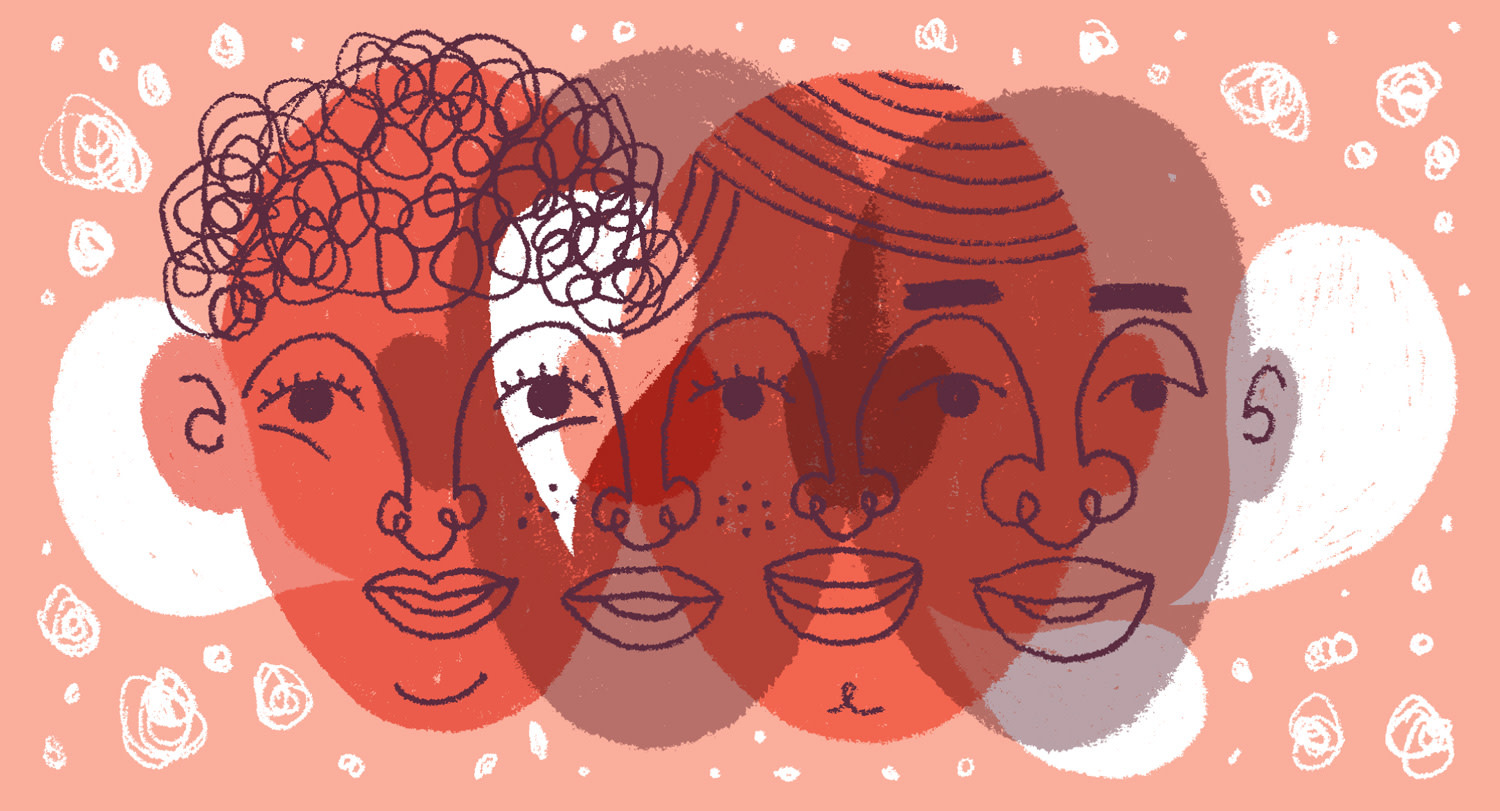It's the last trimester of the school year, and we are in the middle of a unit on the social construction of race. I ask my students, who are 8 and 9 years old, to think about the first time they learned about race. Many share that they notice and wonder about skin color but thought it was rude to discuss. A few remember learning about race through lessons about Dr. Martin Luther King Jr. Some have been called racially biased words and names. Others ask questions about racial struggles Brown people face and why we don't have more lessons about them.
I'm often asked by eager teachers how to facilitate conversations about difference and inclusion. Although my students demonstrate comfort with sharing their thoughts on topics such as race and gender, we do not begin the school year by diving into the deep end.
To cultivate a learning space where everyone feels comfortable sharing their experiences and asking tough questions, there must be mutual trust and respect between the students and facilitator, as well as intentional planning by the classroom teacher.
Do the Personal Work
Before planning your first lesson, ask yourself: Are you reflecting on your own identity, biases, and dominant culture beliefs and accepting what you don't know? Have you considered how these facets might affect the way you frame questions and respond to students?
You must also maintain awareness of yourself, your students' experiences, your community, and your history. For example, as a person of East Asian descent, I recognize the "model minority" stereotype that often follows Asian students but also have to be aware of my own implicit biases that may affect my Black students and their families. I completed the Me and White Supremacy Workbook by Layla F. Saad, which walks readers through personal reflection on racial bias. The Guide for White Women Who Teach Black Boys, edited by Eddie Moore, Ali Michael, and Marguerite W. Penick-Parks, was an important text as I examined how race and other aspects of identity affect Black students' school experiences.
Although this work is emotionally laborious, it is crucial to recognize that self-education is ongoing. Building comfort while leading lessons on "taboo" subjects can be intimidating. You will absolutely make mistakes. But it is humanizing for students to see teachers acknowledge when they don't have all the answers and to show that adults expect and inspect their mistakes.
Create Community, Not Hierarchy
Diversity advocate Vernā Myers is noted for saying, "Diversity is being invited to the party; inclusion is being asked to dance." To be able to take on the tough topics, you must create a classroom culture based on autonomy, trust, and mutual respect—not hierarchy. How are you creating space for students to take ownership of their learning and operate with autonomy?
During the first few weeks of the school year, I prioritize social-emotional lessons and community building over academics. You can always go back and reteach a math lesson, but creating a positive classroom culture from the start is something you cannot afford to get wrong.
To develop trust and prepare my students for upcoming conversations on topics such as race and gender, I want them to know that I am accountable to them. One of my first lessons involves reading Patricia Polacco's book Thank You Mr. Falker and charting what qualities make an effective teacher. My students list their expectations for me, which I write into a contract for them to review. When they agree on a final draft, I sign the "teacher agreement" in front of them. Throughout the year, I remind them that our community only operates well when both trust and mutual respect are in place.
The first time I created a multi-lesson unit on race and racism, I wanted my 4th grade students to understand the importance of conversations, so I set them up to listen and discuss issues that many adults try to avoid. We brainstormed about the environment and behaviors we would need to cultivate for everyone to be vulnerable and created an agreement that we followed for every lesson:
- Share what you're comfortable with.
- Ask questions and ask them with positive intent.
- Seek to understand; don't criticize others if they don't understand.
- Show respect to everyone, regardless of opinions.
- Give positive suggestions.
- don't share other people's personal business.
- Expect and respect mistakes.
- Avoid jumping to conclusions and judgmental words (e.g., good, bad, right, wrong).
Use a Social Justice Lens
If you're passionate about issues of equity and inclusion, it's easy to want to take on everything at once. Educators often ask how I manage to teach about difference and inclusion in addition to core subjects and required standards. Equity and inclusion issues should not be confined to a single block in your agenda. Instead, think of them as a lens through which you can teach other subjects. If you're teaching a nonfiction reading unit on biographies, choose texts that feature the lives of Black people, indigenous people, and other people of color. If your students are crafting opinion essays, why not have them write about current events or social issues? If you're a STEM teacher, how can you incorporate equity issues like financial literacy and environmental justice?
When I taught 2nd grade, I integrated a unit on gender stereotyping into our reading and writing curriculum. To introduce the concept of stereotyping, my students brainstormed how the media portrays teachers and kids and reflected on these representations' validity. They cut up advertisements for Halloween costumes and sorted them based on boy and girl stereotypes, then questioned the effect of these marketing messages (see table). The children read folktales and classic fairytales from all over the world and noted how the stories portrayed men and women. As part of our persuasive writing unit, students wrote letters to toy and clothing companies, asking them to be mindful of perpetuating gender stereotypes.
Talking Stereotypes: Halloween Costumes
TIP
We addressed all curricular requirements and standards, but the lens through which we studied expanded students' worldview on gender difference and inclusion. In the past few years, I have also expanded the conversations to include how people who are non-binary or transgender are affected by gender stereotypes.
What to Do When Issues Arise?
Many teachers avoid talking about race because they worry about confrontation or other difficult situations. I experienced this when one of my 4th grade students made a racially insensitive remark. Rather than discipline the student, I explained to the class that this moment was an example of why we need to learn about racism in the first place. I highlighted that racist words and acts stem from stereotypical and biased beliefs about people of color, often rooted in physical characteristics. Drawing attention to this truth was uncomfortable, but in order for students to unlearn racial biases, we have to put a spotlight on those problematic beliefs.
I shared this experience during my TED Talk, "How to Teach Kids to Talk About Taboo Topics." Some teachers who watched the talk admitted they wouldn't have known how to handle the incident and their "fight or flight" instincts would have kicked in. Others sent me angry messages that my reaction toward the student wasn't harsh enough, that I shouldn't protect the feelings of my white students, and that I shouldn't let such ignorance stand.
What I didn't share in my TED Talk is that my classroom is incredibly diverse and the student who made that comment isn't white. Even when working in a racially diverse community, stereotypes, biases, and prejudices are always present. This was an opportunity to remind my students that people who are Black or Brown can still harm one another, and we need to be aware of the ways we marginalize each other.
During these conversations, ignorant comments and questions will most likely arise. Remember that all questions come from a place of ignorance, and both children and adults have a lot to learn about discussing race, gender, and religion.
We should question, rather than shame, students for their ignorance:
- "I'm curious: Where did you hear that word, and do you know what it means?"
- "What was your intent by making that comment?"
- "How do you think it makes your classmates feel when you use that word?"
This approach holds students accountable without shaming them. (The Teaching Tolerance article "Speaking Up Without Tearing Down" by Loretta J. Ross also has effective strategies.)
Expecting these lessons and conversations to unfold perfectly is unrealistic. Nevertheless, it's important to be prepared to respond and facilitate when issues arise.









